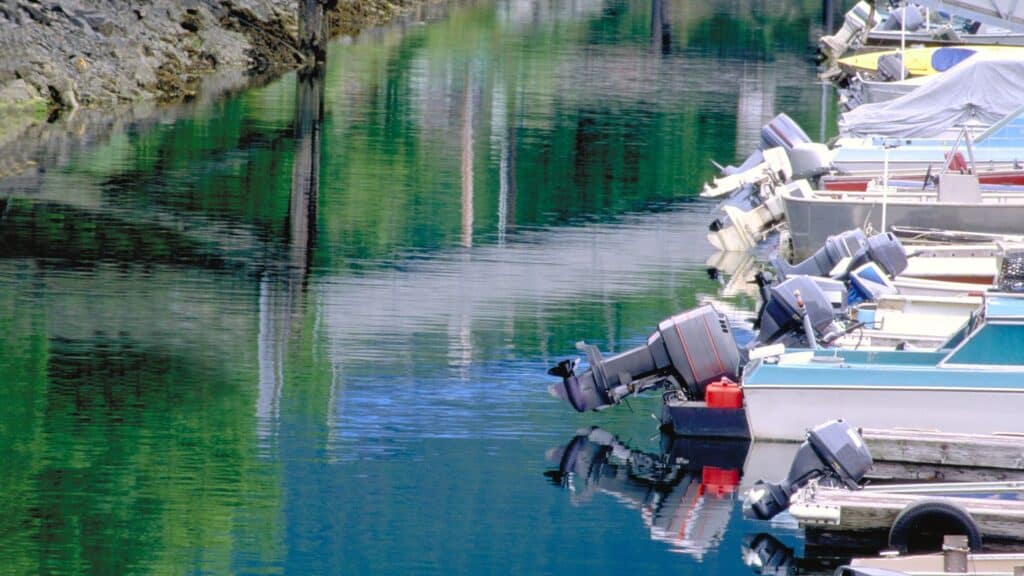Of course, with all new boating, fishing and adventure equipment we recommend you read the user manual for your boat motor – this will cover the correct starting and operating procedures.
However, there are a few helpful points that may not be mentioned and the Terrace Boating & Leisure Centre team wanted to share them with you today.
During the ‘run-in’ procedure, as a result of the engine (2 stroke carburetor outboards) running double oil, it is quite common for the engine to smoke a bit more and run ‘rough’ at idle. A good idea is to also, if possible, open a front clear or hatch to create air flow. This will blow out any smoke caused by the excess oil. Do not be alarmed if during the ‘run-in’ time you notice a small amount of black oil dripping from the exhaust. This is just unburnt excess engine oil running back down through the motor. Once you stop running double oil this will correct itself. As the cowl is fibreglass it is a good idea to polish it with a fibreglass polish to help protect it from the sun and salt.
Spraying the motor under the cowl with a water displacer is also recommended every 6 months or so.
Most outboards and stem drives have a start-in-gear protection device. This prevents the motor from starting, unless it is in the neutral position, it has not quite fully engaged neutral gear. If you turn the key and absolutely nothing happens then either wiggle the control handle or gently put it into gear and pull it back into neutral. The motor should now crank over. If the motor is fitted with a safety cutout device then always check its connection if the motor will not start.
To avoid damage to the shift linkages only ever shift gears on an outboard or sterndrive with either the motor running or while the motor is turned off and somebody is rotating the propeller. When shifting gears to move underway, always shift with a firm movement so that the clutch dog engages quickly. Shifting slowly will cause the gears to make a ratcheting noise and wear the edges of the clutch dog over time. The trim of the motor adjusts the angle at which the outboard or sterndrive leg runs across the water. Correct trim position will depend on a number of factors such as water conditions, boat speed, weight content and weight distribution in the vessel. As a general rule you have the motor in the fully down position when getting onto the plane. This will help keep the nose of the boat down and the boat will come on to the plane faster and flatter. Once on the plane the motor should be trimmed up a little and you will feel the nose of the boat and the revs of the motor pick up. If you trim up too far then the boat may start to ‘porpoise’. As you trim up you will also feel the steering go neutral and come into balance. This is the best way to determine the right angle to run the motor. If you trim down you will feel the best way to determine the right angle to run the motor. If you trim down you will feel the steering pull one way. Also, it will pull in the opposite direction if you trim up too far.
We strongly recommend that you spend a few hours, if you are new to boating, experimenting with different trim positions at different speeds.
And most of all we hope you enjoy happy and safe boating!
If you are shopping for an outboard boat motor or your boat needs a service or repair give us a call on (02) 4983 5600
